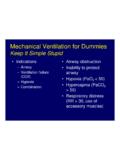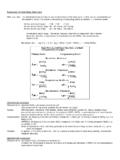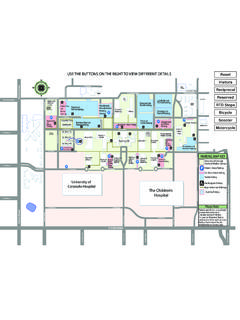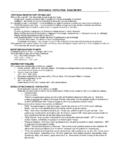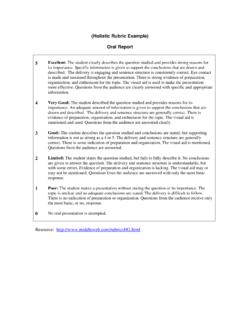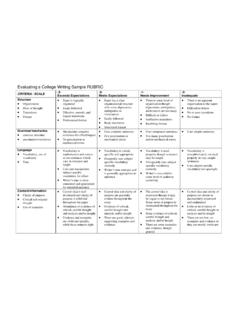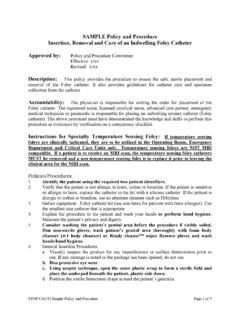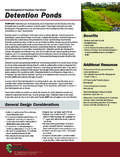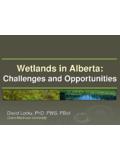Transcription of SAFETY OF DETENTION AND RETENTION PONDS
1 SAFETY OF DETENTION AND RETENTION PONDS By Jonathan E. Jones, James Guo, Ben Urbonas, Rachel Pittinger Jonathan Jones, , is CEO of Wright water Engineers Inc. in Denver, CO. James Guo, , , is a professor in the University of Colorado's Civil Engineering Department. Ben Urbonas, , is manager of the Master Planning Program for the Urban Drainage & Flood Control District in Denver, CO. Rachel Pittinger is a project engineer with Wright water Engineers in Denver. Introduction Urban stormwater RETENTION and DETENTION PONDS are widely used in the United States. RETENTION PONDS , also commonly called wet PONDS , refer to facilities that maintain a permanent pool, while DETENTION PONDS , often called dry PONDS , contain water only in the aftermath of runoff events.
2 Although RETENTION and DETENTION PONDS can be effective for stormwater management and flood control, they can also pose risks to public health, SAFETY , and welfare. Urban storm drainage system planners, designers, facility owners, maintenance staff, and municipalities, including their elected officials and governing bodies, must be aware of such risks and insist on the use of recommended techniques to minimize them. Licensed professional engineers should be especially concerned about the risks that their designs may pose and be knowledgeable of design approaches that reduce such risks, given that their paramount responsibility as licensed professionals is to protect public health, SAFETY , and welfare.
3 The purposes of this article are to review SAFETY hazards that can be associated with RETENTION / DETENTION PONDS ; discuss techniques that can be used to reduce the risk of such hazards; and review representative pond SAFETY recommendations and guidance from municipalities, state and federal governments, professional societies, and the general stormwater literature. Although the focus of the article is on wet and dry PONDS , many of the issues and recommendations presented here apply to other stormwater facilities, such as best management practices (BMPs), long underground pipes, and culverts (see the discussion of this topic later in the article). Conceptual designs of a typical wet pond and dry pond are provided in Figures 1 and 2, respectively.
4 Photographs 1 and 2 show examples of typical facilities. Photo 1: Typical RETENTION pond Photo 2: Typical DETENTION pond Overview Unsafe conditions can occur under both dry and wet weather conditions. These range from readily apparent problems such as outlet pipes that are open (unprotected with trash/ SAFETY racks) to less obvious concerns such as outflow pipes that are subject to overwhelming hydrostatic forces due to high headwater depths. A complicating factor is that children are often attracted to stormwater facilities, and this poses special design challenges and risks. For instance, the authors are aware of a case where a dry pond in an office park had a rapid rise, and a child playing in the pond was apparently knocked down by jet flows from an inlet pipe, tumbled by vortex flows, and ultimately dragged into an unprotected outlet pipe by suction forces.
5 These forces were not visible (apparent) when the water depth in the pond covered the pipe entrances and outlet. Although it is not feasible to anticipate every public SAFETY risk, many scenarios are foreseeable and can be accounted for during design. Pond SAFETY issues that do not involve drowning must also be considered. For example, embankment slopes that are too steep can be hazardous to the public and maintenance staff (such as those operating lawnmowers). Another example is high wingwalls or other vertical structures. In the past few years, a serious public health concern that has emerged is related to PONDS that create mosquito-breeding habitat due to shallow and stagnant standing water , thus increasing the risk of West Nile virus to the adjacent community.
6 Specific SAFETY Deficiencies The authors have observed the following SAFETY deficiencies in storage facilities: Outlets are open and unprotected, they lack trash/ SAFETY racks, the racks have openings large enough to pose a danger to the public, and/or the racks are too close to the outlet to provide sufficiently slow flow velocities that will not impinge a person against them. Adjacent land uses are incompatible with storage facilities and few, if any, steps have been taken to minimize obvious risks. For example, a nursery school playground without a fence was observed immediately next to a RETENTION pond that had a high concrete wall along one side without a suitable railing.
7 The public is effectively invited to spend time near storage facilities because they are located in parks, along bike trails, next to playgrounds, etc., yet the designers fail to recognize that frequent use will occur, and public SAFETY has clearly not been a specific design objective. Education of community residents, office and industrial park employees, users of multipurpose recreational facilities, etc., regarding pond hazards is not provided. Signs warning the public of rapidly rising floodwaters and associated danger are not posted. Sideslopes of the facility are excessively steep or vertical without suitable SAFETY rails. As a result, it would be very difficult for someone to get out of the pond when water levels are rising.
8 Sideslopes within the pond's permanent pool are too steep, and/or PONDS lack " SAFETY benches" around their perimeter. Pond inflow and outflow pipes are directly across from and in close proximity to one another. In this case, a person can be knocked over by the impulse forces (momentum) of inflows and then sucked into and/or pinned against the outlet structure. Pond depths increase very rapidly, and inflow/outflow pipes are quickly inundated and not visible. Hydraulic structures are designed and constructed in a manner that makes them hazardous. For example, steel bars on grates are not beveled, rounded, or covered, but have sharp ends. Bolts have jagged, exposed ends.
9 Gaps between steel bars and concrete walls are too wide. Railings either are not used where they should be or are improperly designed. PONDS have a "hard edge" appearance, such as a block or cobblestone vertical wall, immediately adjacent to the water surface drop into a pond that has steep sideslopes, so a person who falls in cannot get out without having to swim. A variety of problems with spillways have been observed. For example, spillways are undersized. Dams and embankments are not designed to withstand overtopping forces during floods larger than they were designed to detain, despite the presence of homes and businesses in the "dam break" floodplain downstream. This is often the result of designers assessing embankment behavior for the design event, such as the 50-year storm or the 100-year storm, but failing to recognize that larger events can and do occur, and that the consequences of such events have to be considered.
10 Inadequate maintenance and monitoring occur, thus leaving the facilities unable to function as designed or intended. For example, when pond outlet structures are fully or partially blocked with debris, the risk of embankment overtopping and failure increases. Orifices in riser pipes that are used to gradually "bleed down" a water -quality design storm typically have small diameters, which leaves them vulnerable to plugging by trash, debris, sediment, algae, etc., unless frequently inspected and maintained. This can lead to prolonged pooling of shallow, stagnant water , which sets the stage for mosquitoes and, potentially, West Nile virus. Other drainage facilities adjacent to the pond (designed at the same time as the pond) are unsafe, such as channels, drop structures, energy dissipaters, and culverts.
